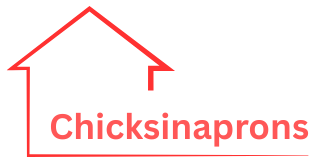Home maintenance and supplies can feel like that never-ending to-do list that mocks you from the fridge. Whether it’s fixing a leaky faucet or stocking up on cleaning supplies, these costs can sneak up on anyone. But what type of expense are they really? Understanding this can help homeowners budget effectively and avoid those dreaded surprises.
Table of Contents
ToggleUnderstanding Home Maintenance Expenses
Home maintenance expenses encompass various costs associated with keeping a property in good condition. These expenses can significantly impact a homeowner’s budget.
Definitions and Categories of Expenses
Home maintenance expenses fall into fixed and variable categories. Fixed expenses refer to predictable costs, such as property taxes and mortgage payments. Variable expenses change over time and include repairs, cleaning supplies, and gardening costs. Routine maintenance tasks involve a consistent commitment to upkeep, while emergency repairs arise unexpectedly as various issues occur. Understanding these definitions helps homeowners categorize their spending effectively.
Importance of Tracking Expenses
Tracking home maintenance expenses allows homeowners to maintain a clear financial overview. Regular monitoring often surfaces trends, revealing areas where costs may fluctuate. It supports better budgeting and prioritization for future projects. Accurate tracking can help identify the most frequent issues, guiding homeowners in addressing persistent problems. A well-maintained record assists in preparing for future inspections and reassurances, minimizing surprise costs.
Types of Home Maintenance Expenses

Understanding home maintenance expenses helps homeowners budget effectively. These expenses can be categorized into three main types: essential repairs, routine maintenance, and seasonal expenses.
Essential Repairs
Essential repairs cover urgent issues that threaten safety or property integrity. Examples include fixing broken pipes, replacing a malfunctioning furnace, or repairing roof leaks. These costs often arise unexpectedly, resulting in significant financial strain. Homeowners should prioritize these expenses to maintain both home value and safety. Allocating funds for emergencies promotes peace of mind and ensures necessary repairs occur promptly.
Routine Maintenance
Routine maintenance involves regular tasks that prevent larger issues down the line. Examples are cleaning gutters, servicing HVAC systems, and painting exterior surfaces. These activities help preserve a home’s condition, saving money over time. Homeowners should schedule routine checks to identify potential problems before they escalate. Consistent upkeep allows for more manageable budgeting while keeping homes in optimal shape.
Seasonal Expenses
Seasonal expenses pertain to maintenance tasks required during specific times of the year. Examples include winterizing outdoor plumbing, preparing the garden for spring, and servicing air conditioning units before summer. Being proactive with these tasks minimizes risk and tops off seasonal preparations. Planning for seasonal expenses in advance allows homeowners to spread out costs throughout the year, avoiding financial stress during peak seasons.
Classifying Home Maintenance and Supplies
Home maintenance and supplies represent crucial expenses in managing a household. Understanding their classifications helps homeowners budget effectively.
Fixed vs. Variable Expenses
Fixed expenses remain constant, such as property taxes or mortgage payments. Variable expenses fluctuate and include items like cleaning supplies or repair costs. Homeowners should track these expenses carefully to ensure a clear financial overview. By identifying fixed costs, one can plan for steady monthly expenditures. In contrast, monitoring variable costs reveals spending trends and prepares for potential increases in repairs. Prioritizing essential variable expenses can prevent larger financial burdens over time, leading to better overall management.
Capital Expenditures
Capital expenditures encompass significant investments in property improvements, like roof replacements or HVAC system installations. These expenses often exceed routine repairs and supply purchases. Planning for capital expenditures requires setting aside a dedicated budget. This approach allows homeowners to address substantial needs without disrupting financial stability. Investing in capital projects tends to increase home value and can yield long-term savings through improved efficiency. Recognizing the difference between routine costs and capital expenditures leads to informed decision-making regarding home maintenance.
Budgeting for Home Maintenance
Homeowners face various expenses while maintaining their properties. Creating a well-structured maintenance budget prevents unexpected costs and supports long-term financial health.
Creating a Maintenance Budget
Establishing a maintenance budget begins with assessing current and anticipated expenses. Homeowners should categorize expenses into essential repairs, routine maintenance, and seasonal tasks. Utilizing historical data, such as past repair bills and maintenance records, helps set realistic expectations. Planning for both fixed costs and variable costs ensures stability. Allocating a specific percentage of household income for these expenses provides financial clarity. Regularly reviewing and adjusting the budget accounts for unforeseen repairs or changes in property needs.
Tips for Effective Financial Planning
Effective financial planning involves several key strategies. Tracking home maintenance expenses allows homeowners to recognize spending patterns. Prioritizing essential repairs upfront prevents costly issues down the road. Consider setting aside funds for seasonal tasks, such as gutter cleaning or winterization, to avoid financial strain. Utilizing apps or spreadsheets to organize and monitor expenses improves understanding of overall spending. Homeowners benefit from creating an emergency fund specifically for unexpected repairs. Regularly revisiting financial goals ensures that budgets remain aligned with the property’s needs.
Understanding the types of expenses related to home maintenance and supplies is crucial for effective budgeting. By categorizing costs into essential repairs, routine maintenance, and seasonal tasks, homeowners can better prepare for financial obligations. This proactive approach helps minimize unexpected expenses and allows for smoother financial planning.
Tracking these expenses not only provides clarity but also empowers homeowners to make informed decisions about their property. With a well-structured budget in place, they can ensure their homes remain safe and well-maintained while supporting long-term financial health. Prioritizing these expenses leads to a more organized and less stressful homeownership experience.


